Here Are Some More 'Performance' Cars You Probably Forgot About
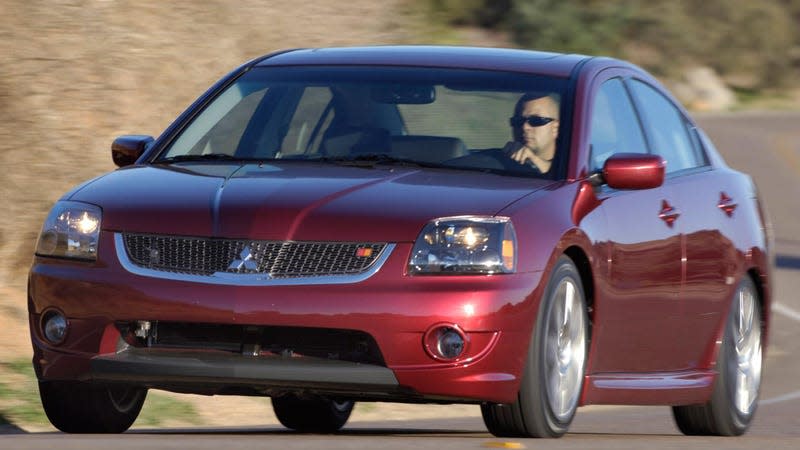
One of the best parts about being a car enthusiast is that you’re constantly stumbling on cars and trims you never knew existed. I’ve gone down the forgotten performance car rabbit hole, and I can’t get free. A lot of these forgotten cars were actually produced in my lifetime, but I can’t remember ever seeing one. It’s been fun to dig into what powered these machines, how long they lasted, and why they ultimately failed. Today, I’m taking you with me on that journey.
Jeep Grand Cherokee TSi (ZJ)
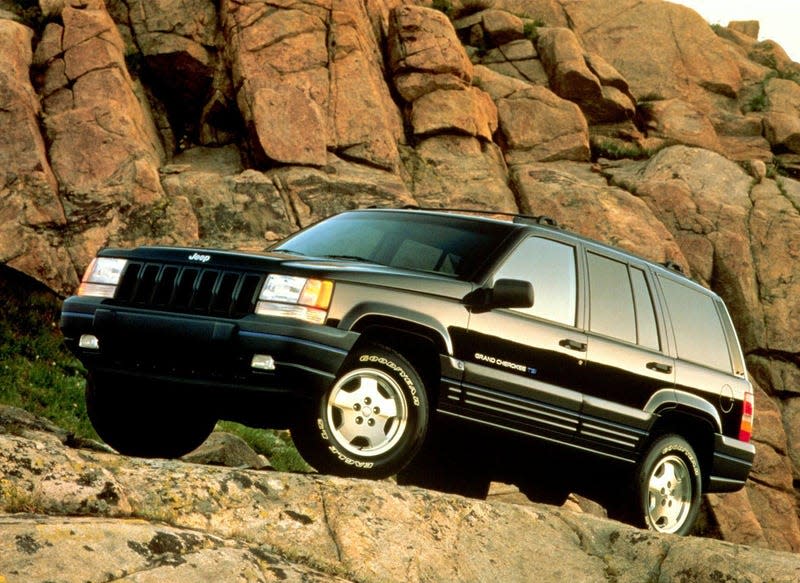
While the 5.9 Limited is usually remembered as being the performance version of the ZJ Grand Cherokee, the Grand Cherokee also had another sporty trim that was around for a hot second. Only offered from 1997-1999, the Grand Cherokee TSi sat between the base Laredo and top-line Limited trims. You got a body-color grille, 16" five-spoke aluminum wheels with Goodyear Eagle all-weather performance tires, unique lower body cladding and Iris Blue pinstripes. Other than that, it was pretty much a Laredo with better trim and nicer features. They even shared the same 4.0-liter I6 engine.
Eagle/Dodge 2000 GTX
Another product of Mitsubishi and Chrysler’s Diamond Star Motors, the 2000 GTX was a rebadged sixth-generation Galant. It was only ever sold in the Canadian market. These things were special in that they were powered by the same 4G63 engine that was in the Galant VR-4, just without a turbocharger. They also has a slick computer controlled active suspension system called Dynamic ECS.
Chevrolet S-10 SS
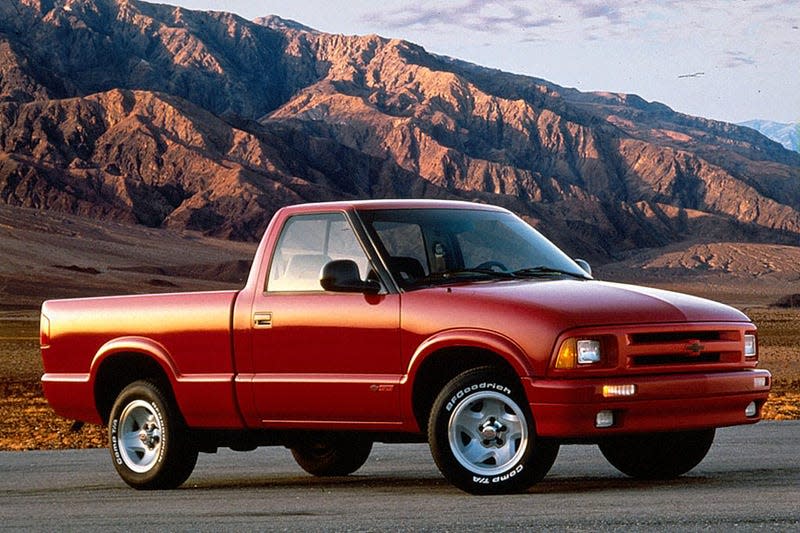
The Chevy S-10 SS was rare. While it was produced from 1994 to 1998, the production numbers I could find say that a total of 10,002 were made over its four-year run. You could only get the SS in black, white or red.
While the S-10 wore an SS badge, it got no upgrades in the power department. All were equipped with GM’s 4.3-liter V6 making between 180 and 200 horsepower. The “performance” goodies were under the skin. The S-10 SS was equipped with a limited slip differential, lowered suspension, four-speed automatic transmissions, Bilstein shocks and bigger front and rear sway bars. The SS was replaced with the S-10 Xtreme.
Oldsmobile Achieva SCX
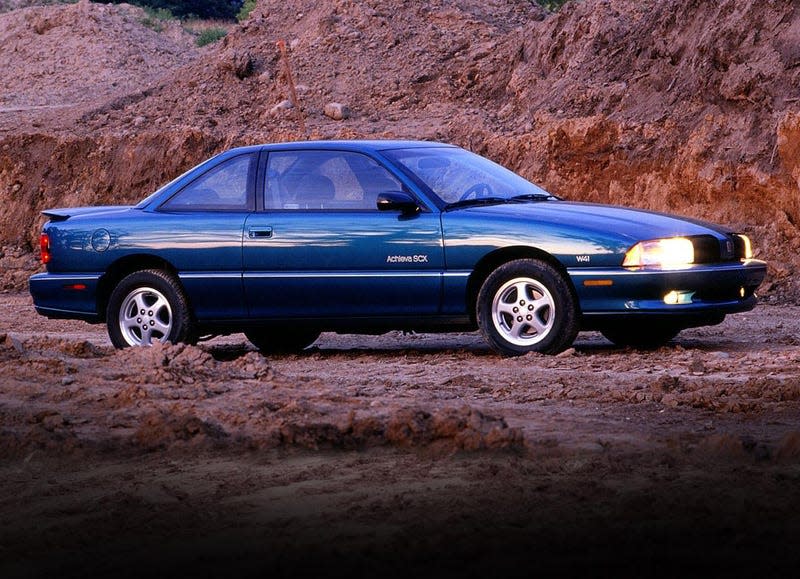
Replacing the weird Cutlass Calais 442, the Achieva SCX debuted in 1992. While the Achieva could be had in both sedan and coupe variants, the SCX could only be had on the coupe. Its performance modifications weirdly came from Oldsmobile’s desire to go racing, specifically in the IMSA Firehawk and SCCA Grand AM World Challenger stock car racing series.
Outside, the SCX received a deeper front bumper with fog lamps, dual exhausts, and W41 decals on the front fenders. This was in reference to the special version of Olds Quad 4 engine that powered the SCX. This high-output W41 Quad Four put out 190 hp and was paired with a Getrag five-speed manual transmission.
Mitsubishi Galant Ralliart
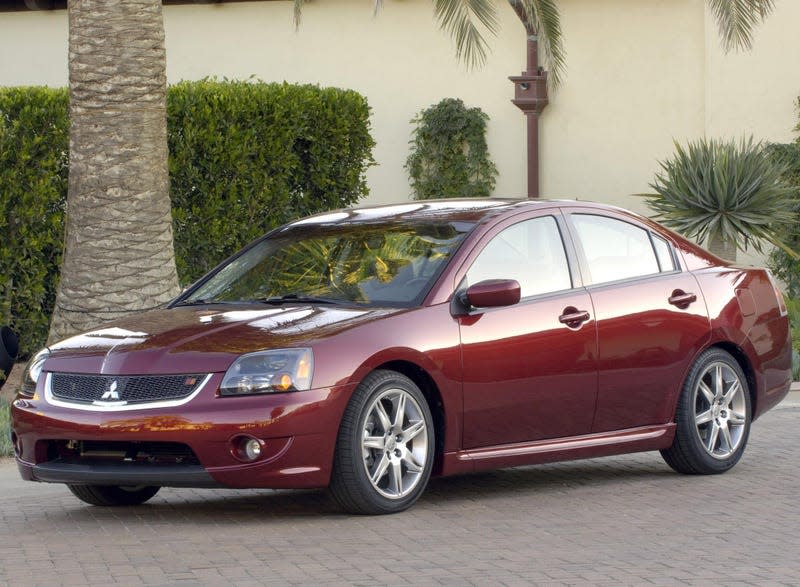
By the 2000s, Mitsubishi was a shell of its former self. Cars like the Galant VR-4 and 3000GT were long gone. The company had a bit of performance left with its Ralliart division — which gave us the Lancer Ralliart —and the Evolution (I guess you can throw the Eclipse in there). But that was it. By 2007, Mitsubishi tried to inject some performance into its Galant sedan one last time by way of Ralliart.
By this time, the Galant was a Camry and Accord fighter. Ralliart took the Galant and dialed things to 11. Well, to 10.5. It shared a 258-hp, 3.8-liter V6 with the Eclipse GT, which was paired with a five-speed automatic. It also received a sport-tuned suspension, a front strut tower bar, a rear stabilizer bar and 18-inch wheels. That’s all in addition to other sporty design elements. But even with these enhancements, the Galant Ralliart was still slower than V6 non-performance versions of the Accord, Camry and Altima.
Mercury Topaz XR5

Around for both generations of the Topaz, the XR5 was sort of Mercury’s sport compact from 1984-1992. Only available as a coupe, the XR5 got sportier bodywork like a black grille and a rear spoiler, while inside it had sport seats with red accents. It was powered by a high-output 2.5-liter I4 with all of 94 horsepower paired to a five speed manual. Luckily, this engine was swapped for the 3.0-liter V6 from the Taurus in 1992, bringing output to 130 hp.
Dodge Ram SST

Before both the Viper-powered Ram SRT-10 and Hellcat-powered Ram TRX, there was the Ram SST. Making its debut in 1996, it came in a regular cab configuration complete with Viper-like stripes and special 17-inch wheels wrapped with Goodyear Eagle II tires. Power came from a 5.9-liter Magnum V8 with an upgraded exhaust system that gave it 15 extra horsepower over the standard engine. The truck could also be had with a special Indy Pace car package shown above.
Plymouth Laser RS Turbo

The third of the trio that included the Mitsubishi Eclipse and Eagle Talon, the RS Turbo was essentially an Eclipse GSX/Talon TSi with a Plymouth badge and different name. This meant a slick all wheel drive system paired to a five-speed manual and a turbocharged 2.0-liter 16 valve 195 hp I4. By 1994 though the Laser was dropped due to low sales.
Porsche 968 Club Sport

The 968 was short lived, on sale for just four years from 1991-1995. In October 1992, Porsche introduced a lightweight performance version called the 968 Club Sport. It was all about making the 968 lighter. Anything and everything that added extra weight was either removed or replaced with something else. For instance, crank windows replaced power windows, and some sound deadening was removed. There also weren’t any rear seats, with the front’s being replaced by Recaros. The result was 220 pounds in weight savings over the standard 968.
Acura RDX (First Generation)

While the RDX is still around, it’s nothing special. It’s just another luxury crossover in a sea of luxury crossovers. The first generation, though, was pretty special for the time. It sported a first for Honda, a turbocharged and intercooled engine in the form of the K23A1 turbocharged I4 with i-VTEC. It made 240 horsepower and 260 lb-ft of torque. This was mated to a five-speed automatic and Acura’s excellent SH-AWD system. The result was a crossover that was quicker and drovebetter than most on the market at the time.

 Yahoo Autos
Yahoo Autos 